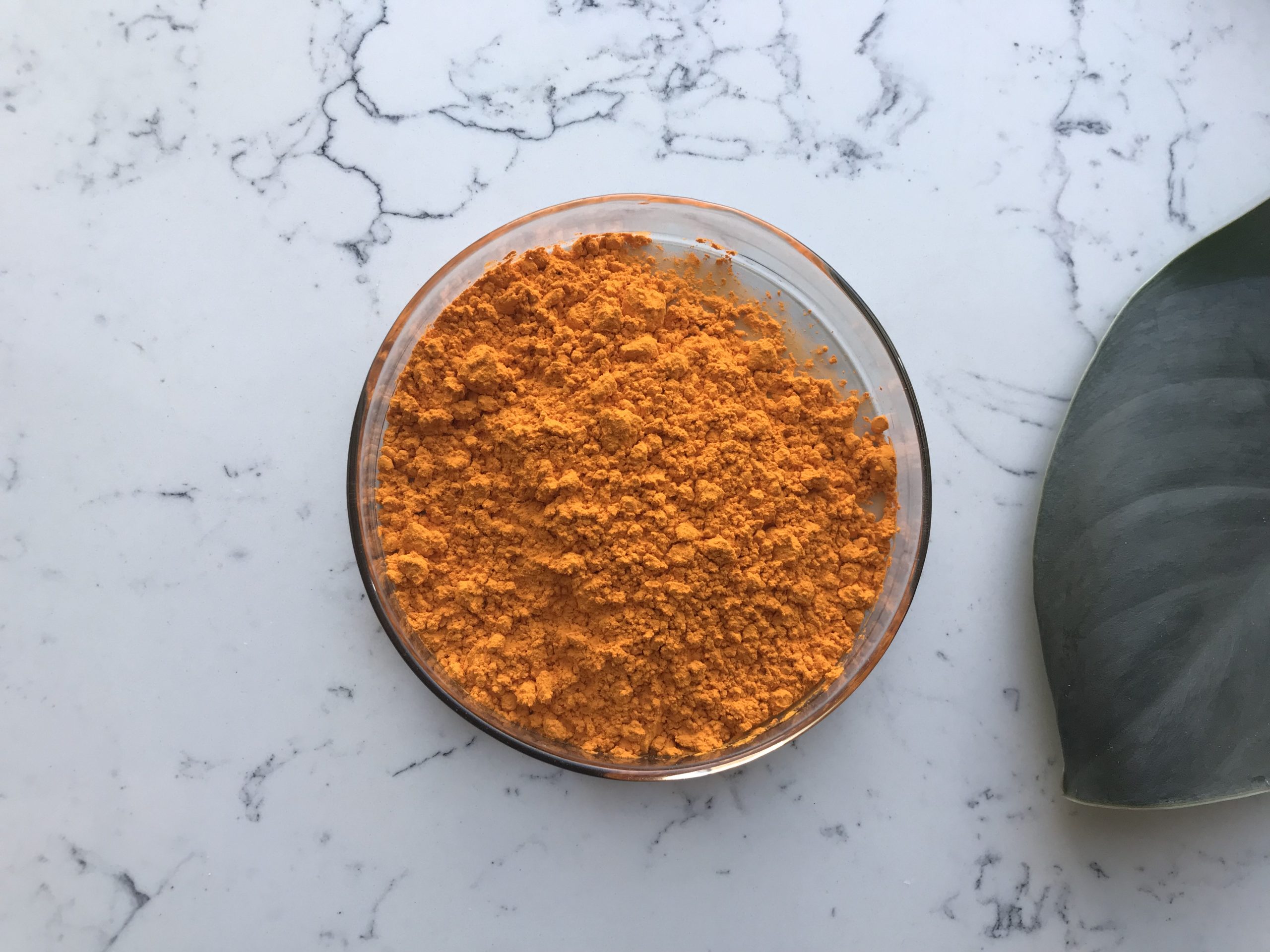Curcumin is a natural compound found in the root of the turmeric plant (Curcuma longa). Turmeric is a flowering plant belonging to the ginger family (Zingiberaceae), and its roots are commonly used as a spice in various cuisines, particularly in South Asian and Middle Eastern cooking. Curcumin is responsible for the bright yellow color of turmeric and is also known for its potential health benefits, including anti-inflammatory and antioxidant properties. It has been studied for its potential role in various health conditions, such as arthritis, digestive disorders, and even certain types of cancer. However, it’s important to note that while curcumin shows promise in laboratory and animal studies, more research is needed to fully understand its effects in humans and its potential as a therapeutic agent.

The extraction process of Curcumin
Curcumin is a naturally occurring compound found in the root of the turmeric plant (Curcuma longa). It’s known for its bright yellow color and potential health benefits, including anti-inflammatory and antioxidant properties. The extraction of curcumin involves isolating this compound from the turmeric root. Here’s an overview of the extraction process:
Sourcing and Harvesting:
Turmeric roots are harvested from the ground. The roots are cleaned, washed, and sometimes boiled or steamed to prepare them for the extraction process.
Drying:
After cleaning, the turmeric roots are typically dried. Drying helps to concentrate the curcumin content and makes it easier to extract. Drying can be done using sunlight, ovens, or specialized drying machines.
Milling and Grinding:
Once dried, the turmeric roots are often milled or ground into a fine powder. This increases the surface area, making it easier to extract the curcumin compounds.
Extraction:
There are various methods of extracting curcumin from the turmeric powder. Some common extraction methods include:
- Solvent Extraction: This method involves using a solvent (such as ethanol or acetone) to dissolve the curcumin from the turmeric powder. The solvent is then evaporated to leave behind the curcumin extract.
- Supercritical Fluid Extraction: In this method, a supercritical fluid, usually carbon dioxide, is used as a solvent. The supercritical CO2 can penetrate the turmeric powder and extract curcumin, and when the pressure is reduced, the CO2 returns to its gaseous state, leaving behind the curcumin extract.
- Water-Based Extraction: Water-based methods can also be used to extract curcumin. This is often preferred for its eco-friendliness and the potential to preserve the natural compounds better.
Purification:
After extraction, the curcumin extract may still contain impurities or other compounds from the turmeric. Additional purification steps, such as filtration, chromatography, and crystallization, may be employed to isolate and purify curcumin further.
Drying and Powdering:
The purified curcumin extract is often dried to remove any remaining solvent or water content. This results in a concentrated curcumin extract in powder form.
Packaging and Storage:
The final curcumin extract is packaged and stored in a controlled environment to prevent degradation. Curcumin is sensitive to light, heat, and oxygen, so proper storage conditions are essential to maintain its potency.
It’s important to note that the extraction process can vary depending on the intended use of the curcumin extract, the equipment available, and the desired level of purity. The extracted curcumin can then be used in various applications, including dietary supplements, cosmetics, and pharmaceuticals.
